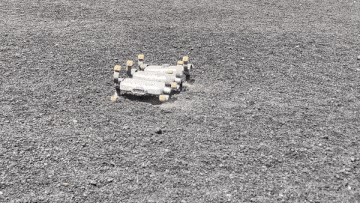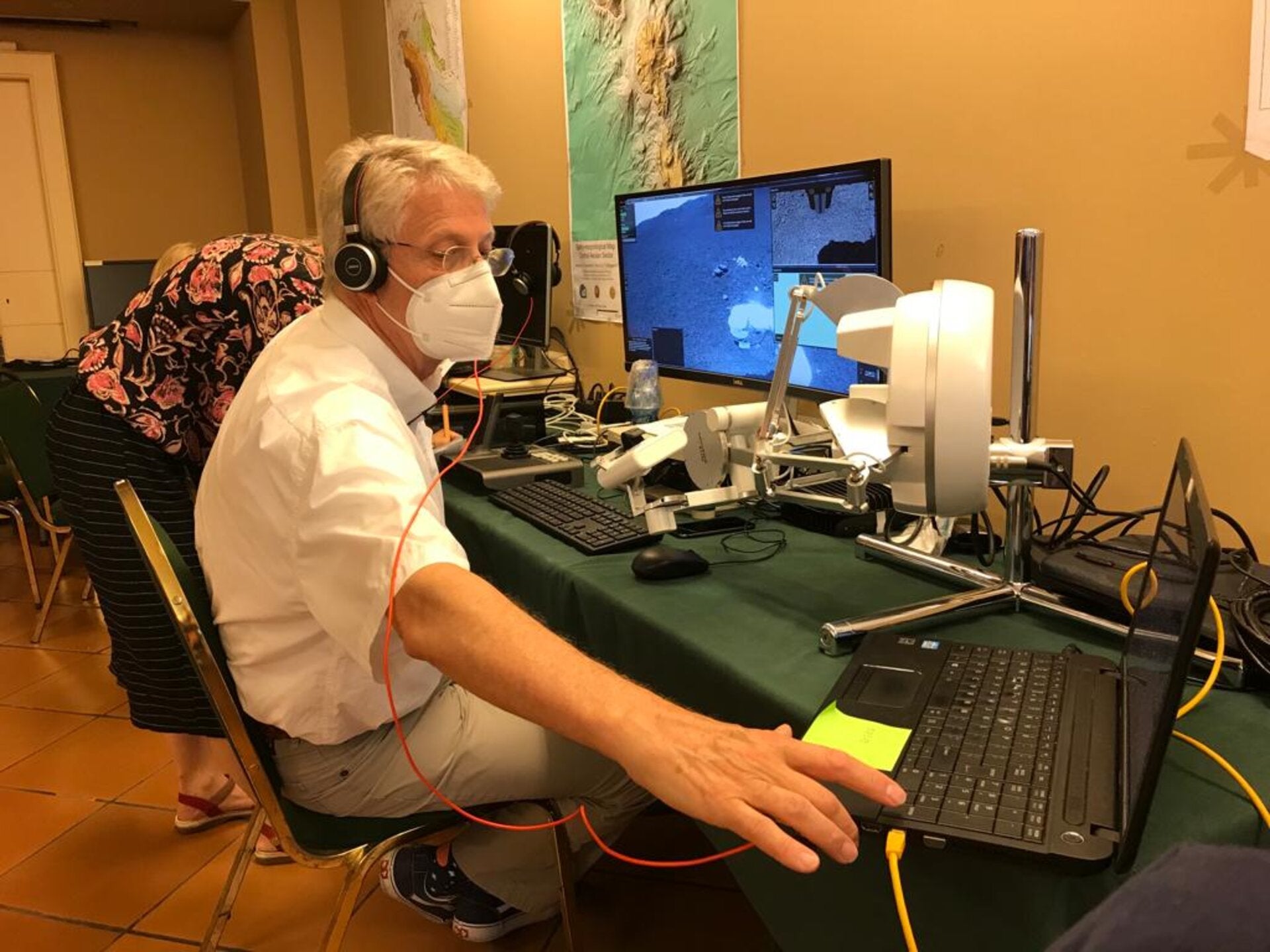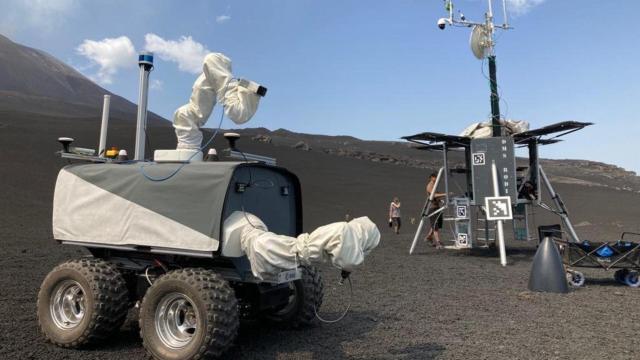While working out of a hotel room in Italy, astronaut Thomas Reiter commanded a four-wheeled robot to pick up rocks from the surface of an active volcano on the Sicilian east coast, and he did so while role-playing as though he were in orbit around the Moon.
The four-day simulation is part of the European Space Agency’s (ESA) preparation for a future mission to the Moon, where it plans to land a rover on the lunar surface to collect rock samples. The rover, as part of the upcoming Artemis missions, will be guided by a team on Earth, as well as an astronaut aboard Lunar Gateway, a planned space station that will orbit the Moon.

Although it’s not quite the Moon, the volcanic surface of Mount Etna served as an analogue for the lunar surface. The four-wheeled, two-armed Interact rover was modified for the rugged slopes of the volcano, and it explored the rough terrain alongside two other rovers, Lightweight Rover Units 1 and 2, belonging to the German Aerospace Centre. In addition, a stationary lunar lander provided the rover with wifi and power, an overhead drone performed surface mapping, and a centipede-like crawler called Scout served as a relay between the Interact rover and the lander. Scout was provided by Karlsruhe Institute of Technology.
During the four days, ESA astronaut Reiter commanded the rover to pick up rocks using controls that were set up at a hotel room in Sicily. Interact rover was also guided by controllers in a rover control room, which was set up in a different hotel room since the controllers and the astronaut will be physically separated during an actual mission.
The rover itself was about 23 km away from the hotel and at an altitude of about 2,600 metres on Mount Etna. To make the exercise more realistic, the team added one second of signal delay to the control system to simulate the time it would take for commands to reach the Moon’s surface from Lunar Gateway. As the rover picked up the rocks from the volcano, Reiter could feel what the rover’s gripper felt from the remote control — an added dimension to the ESA sample collection exercise.

“We’ve learned a lot about collaboration between ground control on Earth and the crew aboard a space station orbiting the Moon, both operating a rover on the surface — this ‘shared’ operation can be extremely efficient — much more efficient than if either side does it alone,” Reiter said in a statement.

The system has been in development for more than a decade, beginning as a joystick that could be controlled by an astronaut while in orbit, according to ESA. The four-day simulation marks the first time that the Interact rover was put to the test during a mock outdoor setup. By the end of the four days, the rover successfully returned the rock samples to the lunar lander. The three rovers also worked together to set up an array of antennas across the simulated lunar surface to emulate a radio astronomy station on the Moon. Interestingly, these antennas actually managed to pick up a radio burst from Jupiter — the result of its volcanic moon Io passing through the planet’s magnetic field.
By the end of the simulation, ESA found that the controls for the rover were likely going to be too onerous for astronauts on board the future Lunar Gateway.
“What we soon found was that continuous remote oversight was very demanding on the astronaut operator, so we added in features to take some of the pressure off — equivalent to the assisted driving offered by modern cars,” Thomas Krueger, the head of ESA’s Human Robot Interaction Lab, said in a statement. “So for example the operator can point to a location and let the rover decide for itself how to get there safely. And its neural net has been programmed to recognise scientifically valuable rocks for itself.”
That definitely sounds much easier and certainly more fitting for the futuristic Artemis era. ESA hopes to launch the rover and put the control system into real action by the end of this decade.
